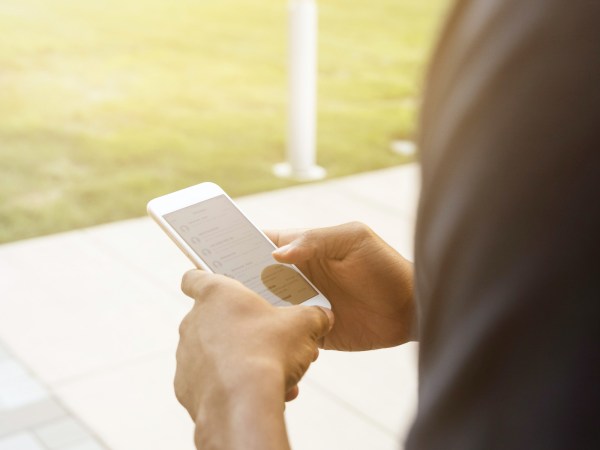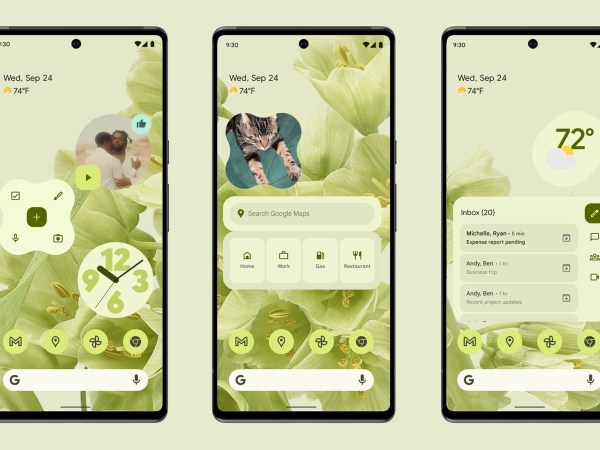

This story has been updated. It was originally published on October 18, 2017.
We rely on our smartphones to stay in touch with the world at large. But the more apps we download, the more notifications we receive, and the flurry of incoming alerts can make it difficult to pick out the updates we actually care about—or to concentrate on anything outside our phones. To balance staying in touch with staying in control, it’s important to manage that onslaught of notifications.
Fortunately, our phones can help. No matter what operating system you use, it will allow you to set Do Not Disturb times, control which apps have permission to interrupt you, and more. We’ll guide you through the relevant settings on Android, iOS, and within individual apps, and then recommend some third-party programs to stem the flow of information.
Notification settings on Android
Over the years, Google has steadily added options for managing your notifications on its mobile operating system. Now, you have a lot of control over which Android apps and events can send you prompts, and how these messages appear on the screen.
To start configuring these controls, open Settings, go to Apps & notifications, and tap Notifications. If your phone runs an older version of the operating system (anything before Android Oreo), just navigate directly from Settings to Notifications. You may see a list of apps that have alerted you recently (under Recently sent) or you may prefer to tap See all to manage every program on your phone. From there, touch Advanced to turn off all notifications for an app, or tap a program’s name to customize its notifications. Decide whether it can get your attention, what sounds those alerts make, and whether they’ll appear on the lock screen.
You can also snooze notifications: When an alert appears, drag it to the left or right, and a clock icon will appear. Tap the icon, and you’ll be able to tell the notification to temporarily disappear before reappearing at a set date and time.
Android also lets you break down an app’s alerts by category, so you can receive nudges for certain activities but not others. In Gmail, for example, you can set notifications to show up only when email rolls into your work address, not your personal one (or vice versa). For this feature to work, individual apps must support it—all Google ones do.
Do Not Disturb mode is another great way to control notifications. When the mode is active, it can prevent alerts from making any sound, or from appearing at all. Enable the mode manually by swiping down from the top of the screen, then tapping the Do Not Disturb icon (a minus sign).
You can also customize Android’s Do Not Disturb mode by visiting Settings, selecting Sound & vibration, and tapping Do Not Disturb. From this configuration page, you can choose certain times for the mode to be enabled automatically—perhaps you don’t want to be disturbed while you’re sleeping, during work hours, or on the weekend. You can also permit certain notifications, like alarms or calls from important people, to grab your attention even when Do Not Disturb mode is active.
Notification settings on iOS
Over on iOS, Apple also lets you take full control over your notifications. In the Settings app, open the Notifications pane to find all the options you need. You can turn notification previews (the short snippets of information that appear with each alert) on or off, and individually configure each of your installed apps.
Tap on an app from the Notifications settings page to set whether that program gets to display alerts at all. You can also decide whether the app icons on your home screen display those little badges that announce the number of unread messages. For example, the badge on your Mail app will show just how many emails you still need to open.
[Related: The best new features in iOS 15]
You can also choose whether notifications from an app appear on the lock screen, and if they do, whether they show up as temporary or permanent banners at the top of the display. For example, you might want to keep notifications from your most important apps at the top of the screen, so random Facebook updates won’t distract you from critical work emails.
For each app, you can also keep notifications but disable their sounds—control that is independent of the phone’s master volume settings. It allows you to stay on top of your messages, while avoiding distracting alerts from apps that aren’t actually that important.
Like Android, iOS also features a Do Not Disturb mode, which you can access from the Focus entry in the Settings app. Tap Do Not Disturb to manually enable the mode or to give it an automatic schedule. If you’re not on iOS 15 yet, you’ll find a standalone Do Not Disturb entry in the Settings app. Once in the menu, you can silence all alerts, or just those that appear when your phone is locked. As before, you can also allow your favorite contacts to transcend the Do Not Disturb rules. Since iOS 11, iPhones have had the ability to make Do Not Disturb mode kick in automatically when they sense you’re driving. If you don’t see an option for it on your Focus settings page, tap the plus sign in the top right and find Driving to get started.
How to customize notifications for individual apps
In addition to those system-wide settings, many apps on your phone have their own notification settings. For your most important apps, take the time to pick through your options and tailor them to suit your preferences.
While we can’t cover every single app here, we’ll review a few examples. Take Twitter: Tap your avatar in the top left, hit Settings and privacy, and then tap Notifications. From this menu, you can configure which activities cause an alert and which don’t. You could turn notifications off for, say, people liking your tweets, but keep them on for replies.
In Gmail, meanwhile, tap the menu button (the three horizontal lines in the top left), then Settings, and then your email address to tweak notifications. You options will vary depending on whether you’re using the app on Android or iOS. On both platforms, you can opt to receive alerts only for messages Gmail has labeled as important. On Android, you’ll have the added ability to enable or disable alerts for all your other Gmail labels as well.
Not every app will give you this much control over your notifications. Some won’t let you customize your alerts at all. Others will simply let you mute notification sounds to make them less intrusive, or control the number of alerts you can see at one time.
A lot of instant messenger apps, like WhatsApp and Facebook Messenger, also let you mute particular conversations. In WhatsApp, for example, open a conversation thread you don’t want to hear from for a while, tap the name of the chat at the top of the screen, and choose Mute. A dialogue box will pop up, offering to block all alerts from the thread for eight hours, a week, or forever.
How to manage notifications for third-party apps
With so many notification settings available on Android and iOS, plus inside the actual apps themselves, third-party app developers don’t have too much to do. Still, you can find some useful tools.
[Related: Take control of your computer’s annoying pop-up notifications]
For instance, Freedom for iOS lets you take full control over your alerts across all iOS devices as well as your computer. You can set quiet times, block specific apps, and more. The price starts at $7 a month, but you can test the app with a free trial.
Over on Android, the free Notification Blocker provides a more basic but still effective alert-stopping service. For example, you can prevent alerts from appearing at the top of the screen from moment to moment. Instead, you catch up on all the ones you’ve missed in bulk at the end of the day.
We can’t provide a one-size-fits-all solution for managing your notifications. Instead, you’ll need to play around with all of the options we’ve mentioned and see what works best for you. With so much potential customization, you should find at least a few ways to tame your notifications and limit your phone’s monopoly on your attention.















